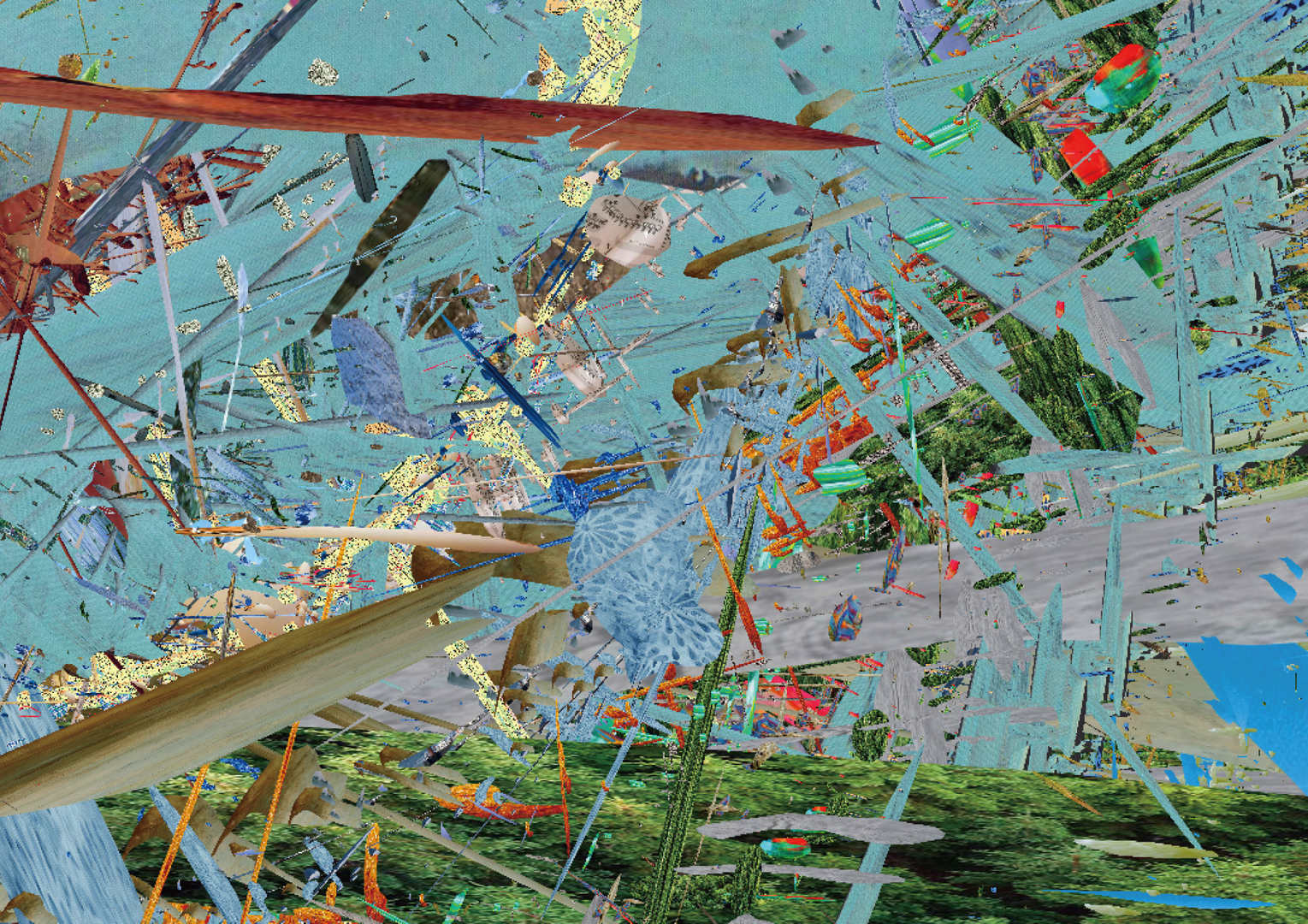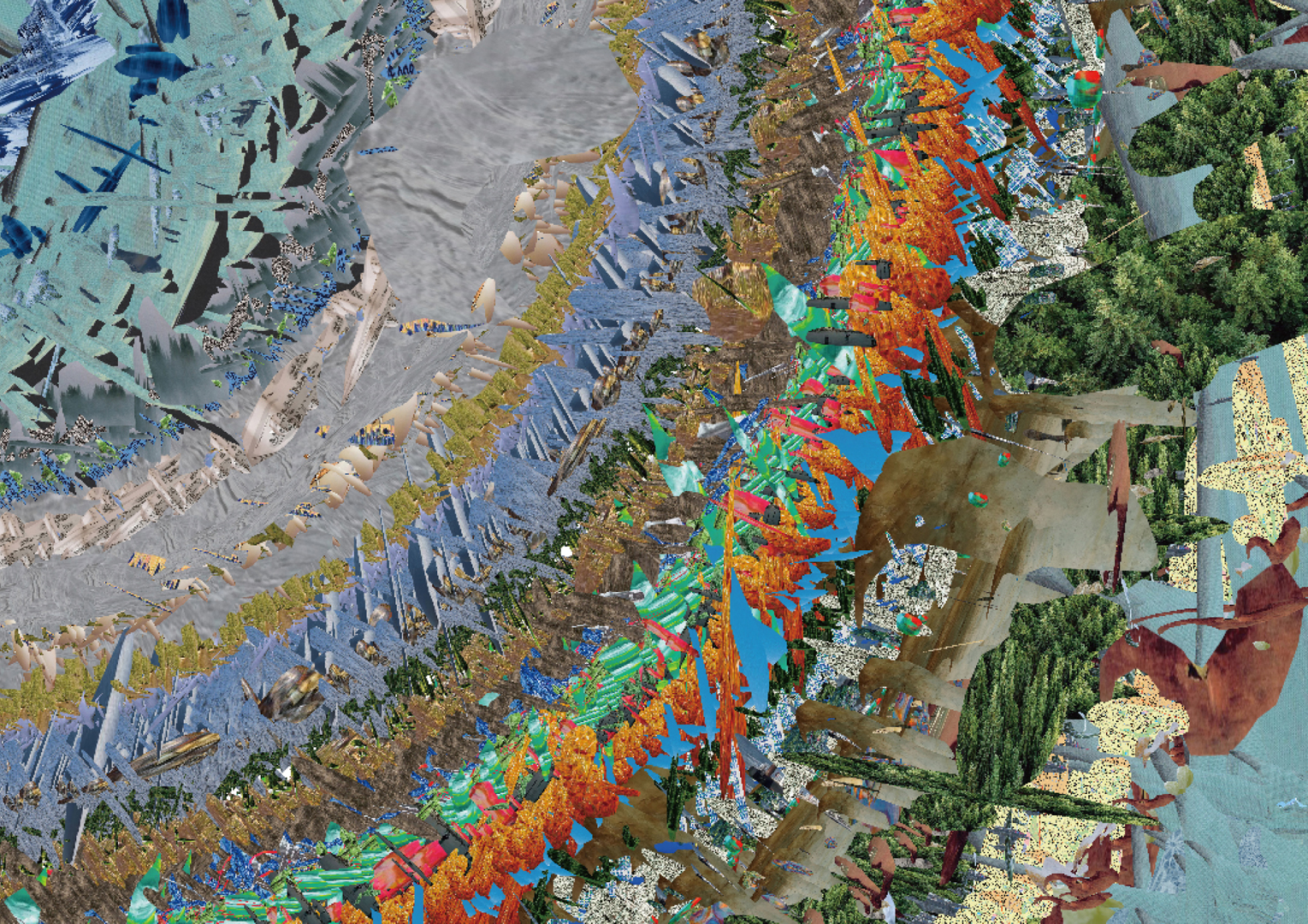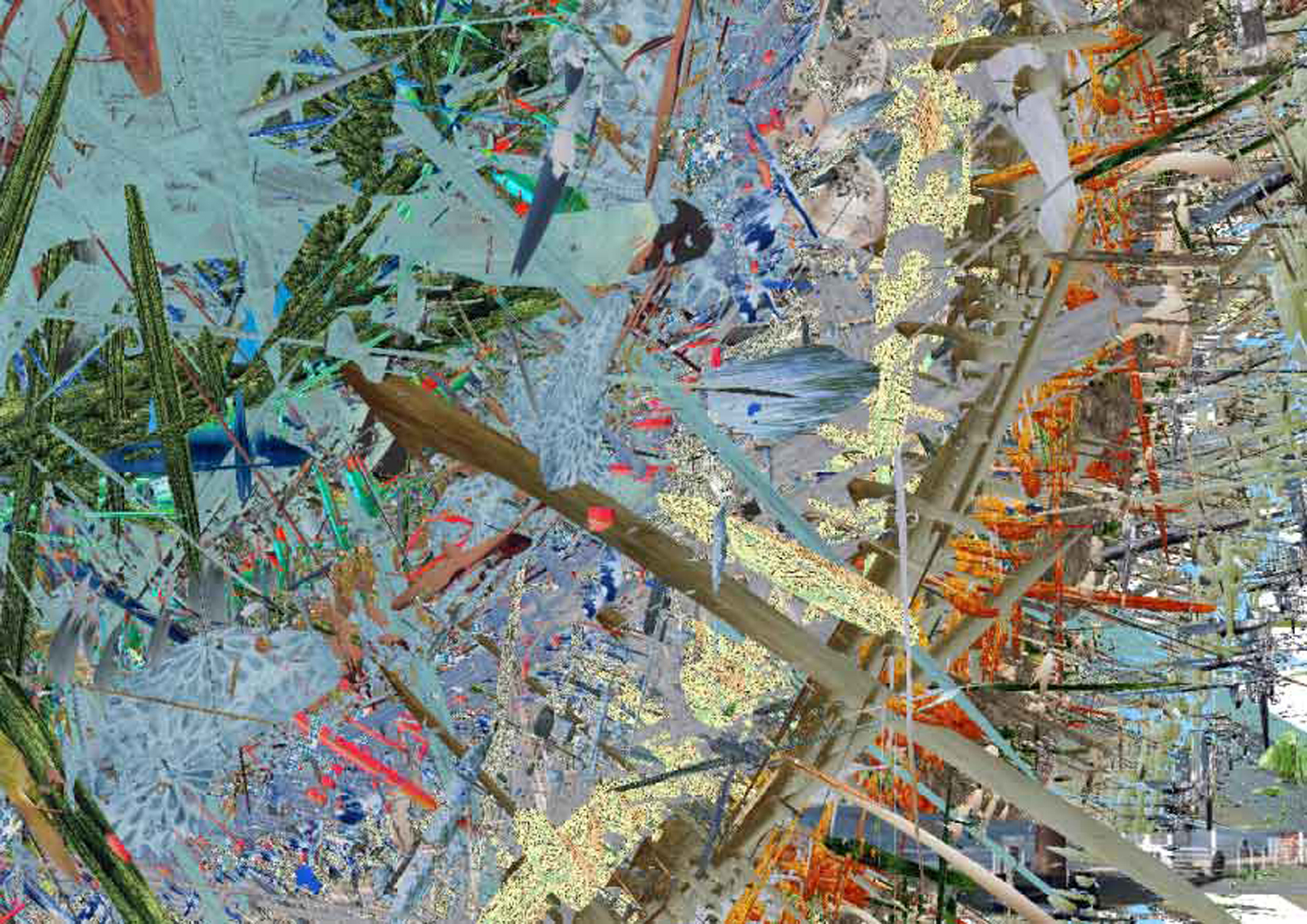Dr. Takuya Yamauchi: River’s Edge
Artist(s):
Title:
- River’s Edge
Exhibition:
Category:
Artist Statement:
Summary
The generative art project was founded in 2016 to experiment with generative algorithms to create new art forms. Since then, numerous creators from all over the world have developed and used novel methods to create such art, and we have had numerous opportunities to admire and appreciate their legacies.
Abstract
River’s Edge is the title of a series of collage artworks created from images obtained via the Internet through the medium of generative programming. In this series of images, the artist used a keyword associated with his childhood memory “River’s End” to conduct an in-depth search for and gather associated images, which he then assembled into vivid and visually appealing collages. In the River’s Edge artwork, blue, gray, and green sections of the collected images were associated with water, stone, and sky. Pieces from hundreds of images were extracted from the Internet in data form, processed, and emplaced in the images. The creative process was based on an algorithm that examined the collected images, extracted appealing sections, subjected them to a limited set of modifications, and then emplaced them into the artwork. Although the algorithm’s functionalities are limited to magnification, rotation, and choosing the areas to extract from the collected imagery, the process made it possible to create a wide variety of collages. In the numerous trials that were conducted to develop this art form, several new expressions were identified, and many beautiful patterns were created.
Technical Information:
This series of collage artworks was created from images associated with the keywords “River’s Edge” collected using an Internet retrieval function. In this generative art process, portions of the collected images were extracted, rotated, magnified randomly, and then pasted into the collage. The algorithm used in the artwork creation was based primarily on the following parts. The first part was data reading, during which the algorithm randomly selected image data from numerous photographs associated with “River’s Edge” from a directory compiled using the title as the keyword. The second part was image processing, during which the program randomly magnified and rotated the image data before finally pasting into the artwork. Although this generative artwork creation method was simple, the actual processing was cumbersome and time-consuming.
Process Information:
After formulating the idea of creating artwork by finding collage pieces using Internet keyword retrieval, I contemplated my past experiences to search for suitable keywords. I eventually decided on River’s Edge, which is the title of Japanese manga written by Kyoko Okazaki. That story, set in a suburb of Tokyo, was filled with characters experiencing sadness and misgivings. However, over time I have realized that although the world described in the story was full of life and death, they were always in a state of coexistence. I now realize that events related to life and death are often natural, simple, and beautiful – even though these matters seem more crucial and profound when they occur. Based on those recollections and thoughts, I decided to use River’s Edge as both the title of the generative art collage series and as the keyword for my image searches. I then collected numerous images related to “River’s Edge,” and wrote and executed the code necessary to create the generative art. When the process was complete, I was surprised by the many vivid blue and green patterns that had been generated spontaneously and noted that each different program execution resulted in clearly distinctive shapes, patterns, and colors. In this series, the colors were classified as blue and green for water and gray for stone. The images were allocated by rotating and magnifying extracted portions before including them in the collages. The final results evoke fascinating vivid impressions, and the simple and beautiful colors reminded me of the artwork of Gianluigi Toccafondo.







